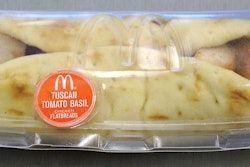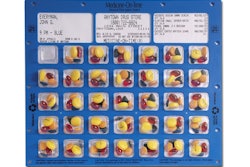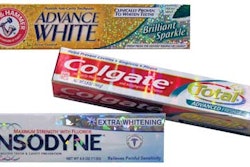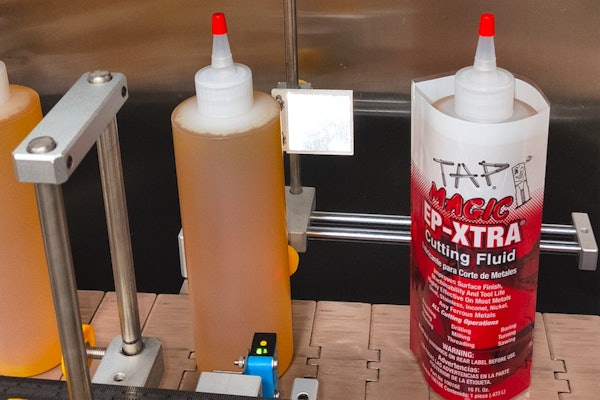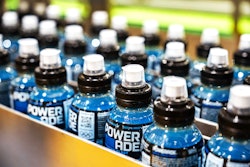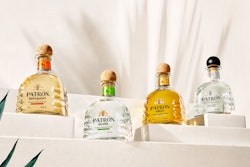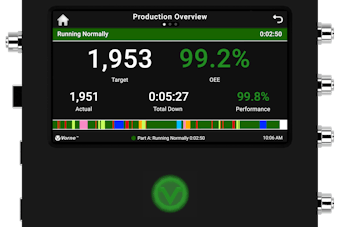Sweden’s Lantmännen Gooh is among the first to commercialize an in-pack microwave cooking and pasteurization concept called MicVac. MicVac AB (www.micvac.com), in close cooperation with SEALPAC (www.sealpacusa.com), developed this unique packaging concept for chilled ready meals. It provides a refrigerated shelf life of at least 30 days at 8 deg C while ensuring maximum taste, nutritional value, and texture.
The company Lantmännen Gooh—or Gooh!, as it’s commonly called in Sweden—was founded in 2005 as a joint venture between food manufacturer Lantmännen Cerealia and a top Swedish restaurant called Operakällaren. The initiative came from Lantmännen Cerealia, part of the Lantmännen Group, a huge food, energy, and agriculture player in Scandinavia. The company is owned by 37,000 Swedish farmers and has 10,500 employees. It conducts business operations in 18 different countries under brands such as AXA, Kungsörnen, Start, Hattings, Regal, and Kronfägel in addition to Gooh!.
As Lantmännen Cerealia, already strong in pasta, breakfast cereals, and flour, went looking for new and upcoming markets, chilled ready meals were identified as a growing trend. That’s when Operakällaren was brought into the picture. A key goal behind the whole Gooh! concept is to give more people the opportunity to eat tasty, well prepared, and healthful food at a reasonable price. In fact, the word “Gooh” in Swedish is short for “Good and Healthy” (GOtt Och Halsosamt). All of Gooh!’s meals are carefully designed by Stefano Catenacci, chef at Operakällaren. The dishes are based on his original recipes and only contain the freshest ingredients. At the moment, 45 employees are working daily on Gooh!’s premium ready meals.
The MicVac method of preparing food involves a thermoformed tray filled with raw food ingredients—meat, poultry, onions, celery—and certain ingredients such as potatoes or rice that are partially pre-cooked. Onto the filled tray a flexible film lidding is heat sealed in place. Both the preformed polypropylene tray and the peelable PA/PP lidding material are made under license by cooperating manufacturers and are supplied to Gooh! by MicVac.
Just before the lidding material is applied to the filled trays, a custom-made labeler from ELS (www.european-labelling-system.de) punches a small hole in the lidstock and applies over the hole a special MicVac valve. The servo-driven film transport of the SEALPAC traysealer helps deliver the accurate hole-punching and label-positioning that are required. In addition, the SEALPAC A7, due to its high sealing pressure and accurate control of sealing temperature, guarantees that the seal of the lidstock to the tray is strong enough to withstand the internal pressure during pasteurization and heating up in the consumer’s microwave oven yet remains easy to peel away when the heated food comes out of the microwave.
Microwave tunnel
Filled and lidded trays are sent through a microwave tunnel, which is also supplied by MicVac. Trays move through this tunnel three-across, and the contents are cooked for 4 to 10 minutes depending on the size of the particulates in the tray. During this cook process, the MicVac valve opens to release internal pressure created as the food releases steam. The patented valve is designed so that it can open and close multiple times.
As soon as the pasteurization process is completed, trays enter a spiral cooler and the MicVac valve closes. Steam trapped inside the tray condenses. This causes internal vacuum pressure to build, causing the bottom of the specially developed FlexTray to curve upward while the lidding film is pulled down towards the food contents. Shortly after the spiral cooler, the trays run through a conventional sleever for application of a decorative paperboard sleeve. With that, the vacuum-packed meals are ready for distribution to today’s convenience-hungry consumer.
One of the great benefits of the MicVac microwave pasteurization system is that, compared to comparable pasteurization techniques such as batch retort or “sous vide,” the food doesn’t spend nearly as much time being exposed to thermal processing. The shorter processing time means better taste and nutrition retention. Consumers also can enjoy a delicious, convenient, ready meal without artificial preservatives or flavorings. And they’re spared the guesswork that sometimes comes with heating a ready meal in the microwave oven because when the dish is ready for serving, the MicVac emits a whistling sound as it opens to allow steam to be vented.
The final result is a cooked, pasteurized, and vacuum packaged ready meal with good flavor, nutrients, and texture. Retailers like the fact that the package, because it’s vacuum packaged, can be displayed attractively in the store either vertically or horizontally.
Production of Gooh!’s ready meals takes place in the Swedish town of Jarna, about 50 km from Stockholm, in a room that was added onto an existing Lantmännen facility producing pasta and muesli. SEALPAC distributor Nemco (www.nemco.se) played a key role in helping assemble the automated line.
Careful research
“We chose the current manufacturing line after an intensive decision-making process,” says Henrik Jacobson, production manager and vice president of Gooh!. “Nemco was the only one who could provide a complete line with denesting, tray-sealing, and various filling systems while synchronizing those systems with the microwave cooking, spiral cooling, metal detection, and sleeving equipment from various suppliers. They recommended a SEALPAC A7 traysealer including a custom-made applicator for the MicVac® label as centrepiece. Nemco’s Sales Director, Lars Olsgaard, came down to our production site in Järna to explain the benefits of the recommended line. During a visit to Kronfågel, also part of the Lantmännen Group, we were able to see the SEALPAC A7 traysealer in actual operation, as well as a machine made by a SEALPAC competitor. Based on the feedback we got from the operators at Kronfågel, we felt SEALPAC was the way to go. A subsequent visit to SEALPAC’s ultramodern production facility in Northern Germany confirmed this feeling.
“Nemco’s role as project engineer was extremely valuable to us. We have no less than five different fillers that can be positioned along the infeed conveyor according to the needs of each product. Obviously, packaging salmon with peeled potatoes is a different process than packing Swedish meatballs with mashed potatoes. Especially challenging was adapting the line to the ingredients that we don’t use very often. But again, this is part of our high food-quality standards.”
Gooh! distributes its ready meals primarily through major Swedish retailers in the Stockholm, Malmö, and Gothenburg areas. Selling price is between 4.50 and 7 Euros ($6.50 and $10). A second important channel is catering. The company’s meals are placed in vending machines at various workplace canteens. By promoting the meals in the workplace, Gooh! sees an increase in consumption at home because employees who enjoy the ready meals at work want to take their experience home to their families. Other target groups include hotels, hospital staff, and airline catering.
Jacobson sums the whole project up this way. “We are currently producing around 30 hours per week, but we see a rising consumer interest in these products beginning to develop. No major expansion is expected in the near future, but we have the possibility to set up two more production lines in Jarna as soon as the market takes off. Being part of the Lantmännen Group means stability. They regard Gooh! as a long-term investment, giving us time and opportunity to optimize the concept. One thing we won’t do is make concessions on the quality or price of our ready meals. It’s our chef who determines the taste of the meals, and it’s the MicVac method that guarantees their shelf life and convenience.” PW



